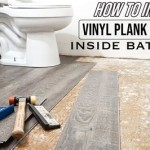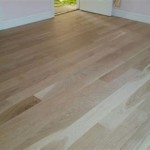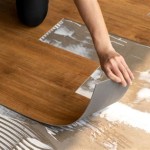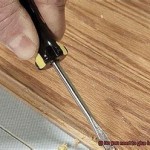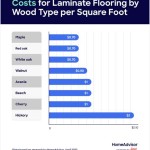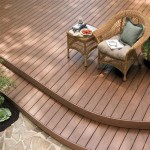What is the Width of a Roll of Vinyl Flooring?
Vinyl flooring, particularly in roll format, is a popular choice for residential and commercial applications due to its durability, water resistance, ease of installation, and relatively affordable price point. When planning a flooring project utilizing sheet vinyl, understanding the available widths of the rolls is a crucial consideration. Selecting the appropriate width can significantly impact installation efficiency, minimize waste, and ultimately affect the overall aesthetic of the finished space. This article provides a comprehensive overview of the common widths of roll vinyl flooring and discusses factors influencing width selection.
Roll vinyl flooring, also known as sheet vinyl, differs from vinyl tiles or planks in its format. Instead of individual pieces, it is supplied in a continuous sheet wound around a cardboard core. This construction offers the primary advantage of fewer seams, leading to enhanced water resistance and a cleaner visual appearance. Seams are potential weaknesses in any flooring system, making sheet vinyl particularly suitable for areas prone to moisture, such as bathrooms, kitchens, and laundry rooms. The fewer the seams, the less chance of water penetration and subsequent damage to the subfloor.
The width of the vinyl roll directly impacts the number of seams required during installation. Ideally, a single sheet of vinyl should cover the entire room without any seams. However, this is often not feasible, especially in larger rooms or areas with complex layouts. Understanding the standard widths and how they relate to the room's dimensions is therefore essential for careful planning and a successful installation.
Standard Roll Widths of Vinyl Flooring
Roll vinyl flooring is manufactured in a limited set of standard widths. These standard widths are a result of manufacturing efficiencies and the practical considerations of handling and transporting large rolls of material. While custom widths may be available from certain manufacturers for very large projects, they typically involve a substantial premium and longer lead times. Therefore, it is generally more cost-effective and practical to select from the available standard widths. The most common standard widths are detailed below:
6 Feet (72 inches): This is one of the narrower options available and is typically used for smaller spaces, such as bathrooms or small hallways. It is often chosen when the room's narrow dimension allows for a single, seamless piece to be used. The advantage of a 6-foot width is its manageability – it is easier to handle and cut than wider rolls, making it a suitable option for DIY installations in confined spaces. However, for larger areas, using a 6-foot width will inevitably result in multiple seams, requiring careful seam sealing to prevent water damage and maintain a visually appealing finish.
12 Feet (144 inches): The 12-foot width is the most common and widely available option. This width is often sufficient to cover the narrower dimension of many standard-sized rooms, minimizing or eliminating seams. For example, a typical bedroom or living room might be 10-12 feet wide, allowing for a seamless installation across the width of the room. This leads to a cleaner aesthetic and improved water resistance compared to using narrower widths. While 12-foot rolls can be somewhat cumbersome to handle, professional installers are well-equipped to manage them, and the reduction in seams often outweighs the added handling complexity.
13 Feet 2 Inches (158 inches): Occasionally, some manufacturers offer a width of 13 feet 2 inches. This dimension provides a slight increase in coverage compared to the standard 12-foot width, which can be beneficial in situations where the room's narrow dimension is slightly larger than 12 feet. While not as universally available as the 12-foot option, this width can be a worthwhile consideration if it allows for fewer seams and a more seamless installation. It's crucial to confirm availability with local suppliers or manufacturers when considering this less common width.
15 Feet (180 inches): The 15-foot width is typically the widest option available for residential vinyl flooring. It is best suited for large, open-plan spaces where minimizing seams is a priority. This width is more common in commercial settings, but can also be used in large residential areas like family rooms or combined living/dining areas. Due to its significant width, handling a 15-foot roll requires specialized equipment and experience. Installation typically requires professional installers. The primary advantage of this width is the potential to cover substantial areas with minimal or no seams, creating a visually expansive and water-resistant floor.
It is important to note that the availability of specific widths can vary depending on the manufacturer, the style of vinyl flooring, and the geographic location. It is recommended to consult with local flooring suppliers or manufacturers to determine the available widths and options for a specific project. Furthermore, it is always advisable to obtain accurate measurements of the room before selecting the roll width to ensure adequate coverage and minimize waste.
Factors Influencing Width Selection
Selecting the appropriate roll width of vinyl flooring involves a balancing act of several factors, including room dimensions, budget, installation expertise, and desired aesthetic. Weighing these factors carefully will contribute to a successful and satisfying flooring project.
Room Dimensions: Arguably the most critical factor, the room's dimensions dictate the minimum width required to minimize seams. Accurately measuring the length and width of the room is paramount. Consider any irregularities in the room's shape, such as alcoves or angled walls, and factor these into the measurements. The goal is to select a width that allows for the fewest number of seams while minimizing waste. It is always better to err on the side of slightly more material than not enough, as extra material can be trimmed, while a shortage can lead to costly delays and necessitate the use of additional seams.
Budget: Wider rolls of vinyl flooring are often more expensive per square foot than narrower rolls. This is due to the increased material and manufacturing complexity involved in producing wider sheets. However, the overall cost may be lower with a wider roll if it reduces the need for multiple seams and seam sealing, saving on labor costs and materials. Furthermore, minimizing waste can contribute to cost savings by reducing the amount of unused material. Therefore, a careful cost analysis should be performed, considering both the material cost per square foot and the potential savings from reduced waste and labor.
Installation Expertise: Handling and installing wide rolls of vinyl flooring requires a certain level of skill and experience. Installing a 15-foot wide roll is significantly more challenging than installing a 6-foot wide roll. The wider the roll, the more difficult it is to maneuver and position accurately. Furthermore, cutting and trimming a large sheet of vinyl requires precision and specialized tools. If undertaking a DIY installation, it is generally advisable to opt for a narrower width that is easier to manage. For wider rolls, it is recommended to hire professional installers who have the necessary equipment and expertise to ensure a successful and visually appealing installation. Professional installers also have experience with seam sealing techniques to ensure a waterproof and durable finish.
Desired Aesthetic: The presence or absence of seams significantly impacts the overall aesthetic of the floor. A seamless installation creates a clean, uniform appearance that is highly desirable in many spaces. Minimizing seams can make a room appear larger and more open. However, in some cases, seams may be unavoidable, especially in larger rooms. In these situations, it is important to carefully plan the placement of the seams to minimize their visibility. Consider placing seams in less conspicuous areas, such as along walls or under furniture. Furthermore, using high-quality seam sealing products can help to blend the seams and create a more seamless appearance. The pattern of the vinyl flooring can also influence the visibility of seams. Patterns with strong directional elements may make seams more noticeable, while more subtle or random patterns can help to camouflage them.
Subfloor Condition: The condition of the subfloor plays a critical role in the success of any vinyl flooring installation, regardless of the roll width. The subfloor must be clean, level, and dry. Any imperfections or irregularities in the subfloor will telegraph through the vinyl flooring, creating an uneven and potentially unsightly surface. Minor imperfections can be addressed with patching compounds or self-leveling underlayments. However, more significant problems may require more extensive subfloor repairs. Ensuring a smooth and level subfloor is particularly important when using wider rolls of vinyl, as any imperfections will be more noticeable across the larger surface area. Additionally, a stable and properly prepared subfloor will ensure that the vinyl flooring adheres properly and remains securely in place over time.
Seam Treatment and Considerations
Even with careful planning and the selection of an appropriate roll width, seams may be unavoidable in some installations. Proper seam treatment is crucial for preventing water damage, maintaining a clean appearance, and ensuring the long-term durability of the floor. Several seam treatment methods are available, each with its advantages and disadvantages.
Chemical Welding: Chemical welding involves using a solvent-based adhesive to fuse the edges of the vinyl sheets together. The solvent softens the vinyl, allowing the edges to bond permanently. This method creates a waterproof and virtually invisible seam, making it ideal for areas prone to moisture. However, chemical welding requires specialized tools and expertise and should only be performed by experienced professionals. Improper application can result in a weak or unsightly seam.
Heat Welding: Heat welding uses a heat gun to melt a welding rod into the seam between the vinyl sheets. The melted rod fuses with the vinyl, creating a strong and waterproof bond. This method is often used in commercial applications where durability and hygiene are paramount. Heat welding also requires specialized equipment and expertise and is typically performed by professionals.
Seam Sealing Tape: Seam sealing tape is a double-sided adhesive tape that is applied to the subfloor beneath the seam. The tape provides a waterproof barrier and helps to hold the edges of the vinyl sheets together. This is a simpler and more DIY-friendly option than chemical or heat welding. However, seam sealing tape may not be as durable or waterproof as the other methods and may require periodic replacement. It is important to select a high-quality seam sealing tape specifically designed for vinyl flooring.
Seam Sealant: Seam sealant is a liquid adhesive that is applied to the surface of the seam. The sealant penetrates the seam and creates a waterproof barrier. This is another DIY-friendly option, but it is important to select a sealant that is compatible with the vinyl flooring and to follow the manufacturer's instructions carefully. Seam sealant may require periodic reapplication to maintain its effectiveness.
Regardless of the chosen method, it is essential to clean the seam area thoroughly before applying any seam treatment. Remove any dirt, debris, or adhesive residue. It is also important to allow the vinyl flooring to acclimate to the room's temperature and humidity for at least 24 hours before installing it. This will help to prevent the vinyl from shrinking or expanding after installation, which can lead to seam failure.

Dark Forrest Oak Vinyl Lino Roll Flooring 2m 4m Width Kitchen Bathroom

Vinyl Flooring Tiles Kosy Furnishing Kota Kinabalu Sabah

Scarlet Oak Vinyl Lino Roll Flooring 2m 4m Width Kitchen Bathroom

Trafficmaster White Oak Residential Vinyl Sheet Flooring 10 Mil 12 Ft Wide X Cut To Length U4410406k735g14 The Home Depot

Banyan Tile Vinyl Lino Roll Flooring 2m 4m Width Kitchen Bathroom

3m Plastic Floor Covering In Rolls 2 5m Width Flooring Linoleum Pvc Roll Vinyl Made China Com

Charcoal Oak Vinyl Lino Roll Flooring 2m 4m Width Kitchen Bathroom

0 35mm Pvc Flooring Roll Vinyl Residential Plastic Sheet Linoleum Made In China Com

D C Fix Outdoor Floor Grey Oak 6 Ft Width X 12 Length 72 Sq Vinyl Roll Flooring Simple To Install Made For Exterior Use 2q3287 The Home Depot

Distressed Oak Vinyl Lino Roll Flooring 2m 4m Width Kitchen Bathroom
Related Posts

